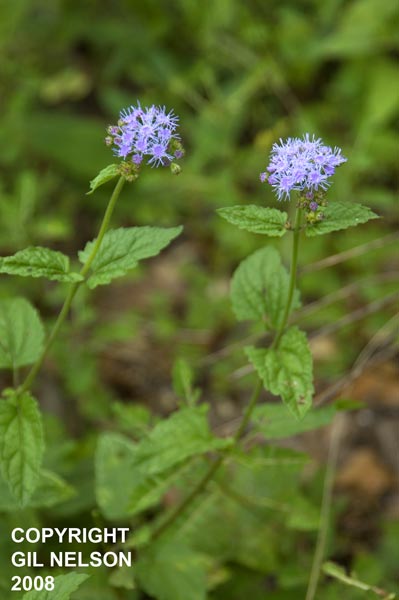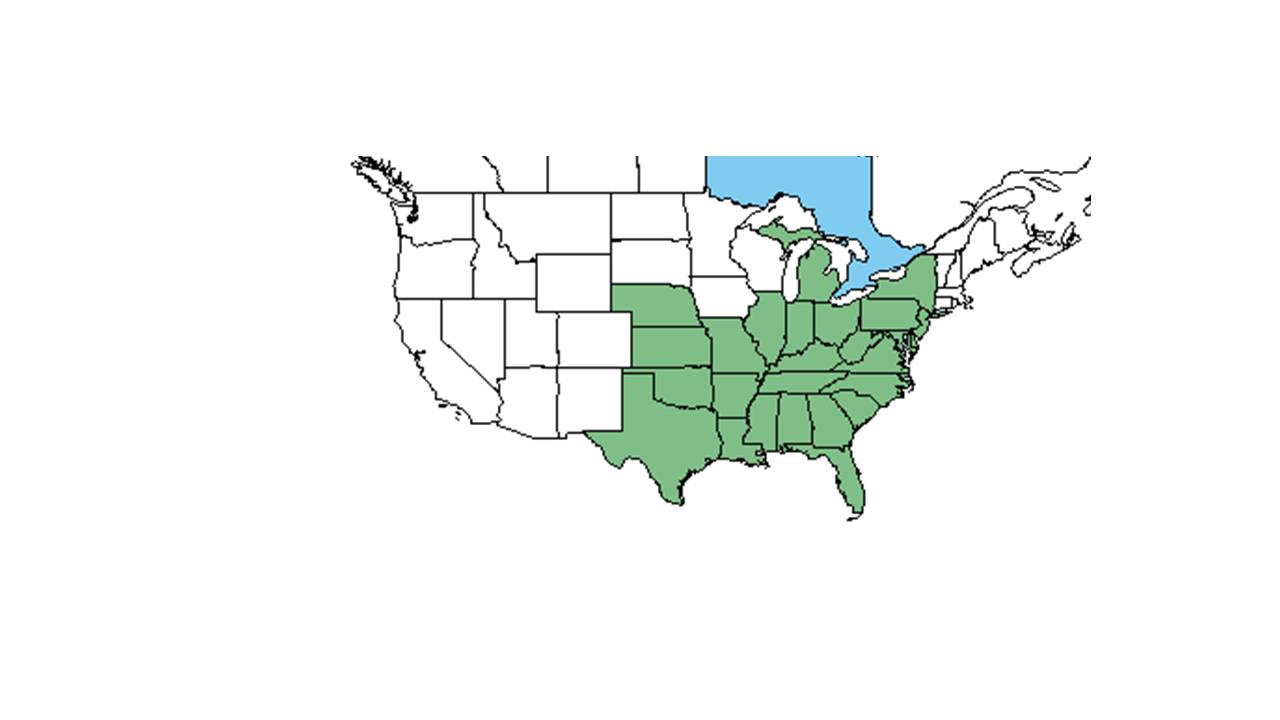Difference between revisions of "Conoclinium coelestinum"
KatieMccoy (talk | contribs) (→Ecology) |
KatieMccoy (talk | contribs) |
||
| Line 46: | Line 46: | ||
Caterpillars of the moths ''Haploa clymene, Phragmatobia lineata, Carmenta bassiformis'', and ''Schinia trifascia'' eat on the foliage<ref name="illinois">[[http://www.illinoiswildflowers.info/wetland/plants/mistflower.htm]]Illinois Wildflowers. Accessed: April 14, 2016</ref>. The bitter foliage defers mammalian herbivores. | Caterpillars of the moths ''Haploa clymene, Phragmatobia lineata, Carmenta bassiformis'', and ''Schinia trifascia'' eat on the foliage<ref name="illinois">[[http://www.illinoiswildflowers.info/wetland/plants/mistflower.htm]]Illinois Wildflowers. Accessed: April 14, 2016</ref>. The bitter foliage defers mammalian herbivores. | ||
<!--===Diseases and parasites===--> | <!--===Diseases and parasites===--> | ||
| − | + | <--==Conservation and Management==--> | |
| − | ==Conservation and Management== | + | <!--==Cultivation and restoration==--> |
| − | ==Cultivation and restoration== | ||
==Photo Gallery== | ==Photo Gallery== | ||
<gallery widths=180px> | <gallery widths=180px> | ||
Revision as of 14:47, 14 April 2016
| Conoclinium coelestinum | |
|---|---|

| |
| photo by Gil Nelson | |
| Scientific classification | |
| Kingdom: | Plantae |
| Division: | Magnoliophyta - Flowering plants |
| Class: | Magnoliopsida – Dicotyledons |
| Order: | Asterales |
| Family: | Asteraceae ⁄ Compositae |
| Genus: | Conoclinium |
| Species: | C. coelestinum |
| Binomial name | |
| Conoclinium coelestinum (L.) DC. | |

| |
| Natural range of Conoclinium coelestinum from USDA NRCS Plants Database. | |
Common name: blue mistflower
Contents
Taxonomic notes
Synonyms: Eupatorium coelestinum Linnaeus
Description
A description of Conoclinium coelestinum is provided in The Flora of North America.
Distribution
Distributed from New Jersey, west to Wisconsin and Kansas, and south to Texas and Florida[1].
Ecology
Habitat
This species has been observed growing in dry woods, hammocks, along the edges of river banks, floodplains, and streams, slash pine-palmetto woodlands, and pine woodlands. It is also found in areas disturbed by humans such as roadsides, ditches, and clearings. Thriving in light from shade to full sun, this species grows in moist sands or drying loamy sands and has even been recorded to grow in water along edges of springs[2].
Associated species include oak, beech, cypress, slash pine, saw palmetto, sweetgum, Cyrilla, Pinus taeda, P echinata, Quercus nigra, Trichostema dichotomum, Helianthus angustifolius, Agaratina aromatica, Solidago odora, S. nemoralis, Pityopsis aspera var. adenolenepis, Sorghastrum nutans, Andropogon virginicus var. virginicus, Chamaecrista fasciculata, C. nictitans, Eupatorium hyssopifolium, Liatris graminifolia, Rubus cuneifolius, and others[2].
Phenology
This species has been observed flowering from June through December[2]. Spreads by long, underground rhizomes[3].
Seed dispersal
Seeds are dispersed by wind[1].
Fire ecology
This species can grow in areas that are regularly burned[2].
Use by animals
Caterpillars of the moths Haploa clymene, Phragmatobia lineata, Carmenta bassiformis, and Schinia trifascia eat on the foliage[3]. The bitter foliage defers mammalian herbivores. <--==Conservation and Management==-->
Photo Gallery
References and notes
- ↑ 1.0 1.1 [[1]]Floridata. Accessed: April 14, 2016
- ↑ 2.0 2.1 2.2 2.3 Florida State University Robert K. Godfrey Herbarium database. URL: http://herbarium.bio.fsu.edu. Last accessed: June 2014. Collectors: Ed Keppner, Lisa Keppner, Loran C. Anderson, K. Craddock Burks, Gary R. Knight, Sidney McDaniel, Robert K. Godfrey, Richard S. Mitchell, Kurt E. Blum, J. P. Gillespie, R. Kral, C. Jackson, R. E. Perdue, Jr., James D. Ray, Jr., Olga Lakela, Gwynn W. Ramsey, Dale Samler, Ronald A. Gursell, P. L. Redfearn, Jr., Brenda Herring, Joyce Leiper, A. F. Clewell, W. G. D'Arcy, Robert L. Lazor, V. Sullivan, Bruce Hansen, JoAnn Hansen, D. C. Hunt, R. Komarek, Angela M. Reid, and K. M. Robertson. States and Counties: Florida: Bay, Brevard, Broward, Columbia, Dade, Escambia, Franklin, Gadsden, Hamilton, Holmes, Jackson, Jefferson, Leon, Levy, Liberty, Martin, Okaloosa, Sumter, Suwannee, Wakulla, and Washington. Georgia: Grady and Thomas.
- ↑ 3.0 3.1 [[2]]Illinois Wildflowers. Accessed: April 14, 2016